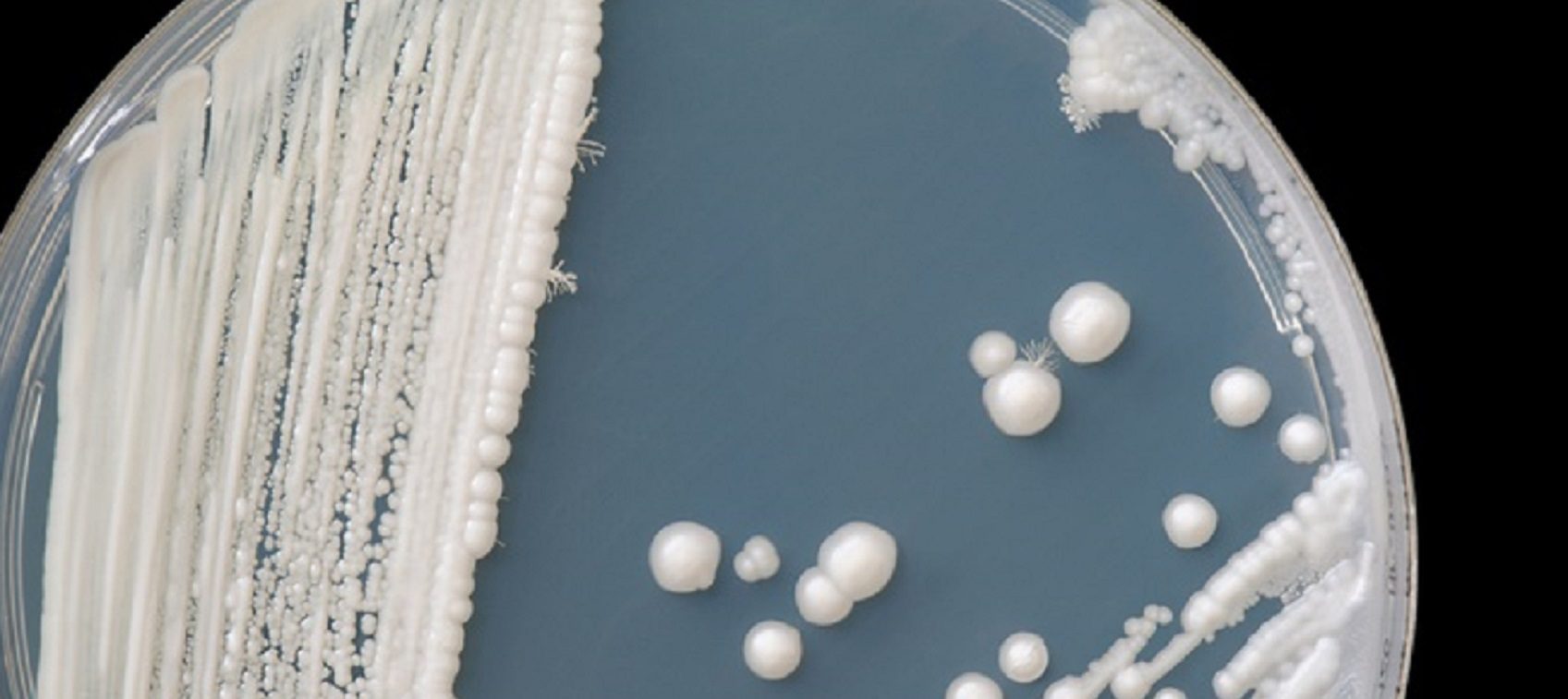
Candida overgrowth affects many people but they may not know candida is the culprit. Symptoms can include abdominal bloating, gas, diarrhea, sore joints and muscles, mental fog, skin rashes and itches, recurrent vaginal yeast infections, athlete’s foot, headaches, food sensitivities and, yes, chronic fatigue.
The problem with candida overgrowth is that its symptoms can masquerade as other, more “recognized” conditions such as Epstein-Barr virus infection, fibromyalgia, hypothyroidism, hypoglycemia, Crohn’s disease, irritable bowel syndrome, HPA axis dysfunction (adrenal fatigue)…the list goes on. Since candidiasis isn’t on the radar with many doctors, you can get misdiagnosed.
Candida Overgrowth Isn’t Just Another Bug
Depending on when and where you look at it, candida is either a yeast or a fungus. And, like a lot of other pathogens, you don’t “catch” it—it’s a normal partner with your body, mostly found in the gastrointestinal tract, vagina, and skin folds. So…candida is a friend, if your natural checks and balances are in harmony.
But candida can overpopulate the gut, and become an aggressive fungus. When that happens, at least one of the following three factors is always involved:
- A decline in healthy gut flora. This relieves the competitive pressure that normally holds candida at bay. It can develop from a poor diet, poor digestion, stress, prescribed antibiotics, and “accidental” antibiotics (from eating antibiotic-laced meat).
- A weakened immune system. Chronic infections, chronic stress, and exposure to toxins and pollution can cause immune system wear and tear. Other culprits can include steroids, including prescription steroid medications such as prednisone, and natural cortisol made by your own adrenal glands in response to stress.
- A disabling diet. Sugars and refined grains are two of yeast’s favorite foods. If your diet is overly sweet, candida flourishes—especially in your colon.
Bolstered by these conditions, candida can keep the absorptive doorways from your gut to the bloodstream open long after they should be clamped shut. Leaky gut can develop and allow candida and other undesirable substances to enter your bloodstream at will. When this happens, candida symptoms can develop.
Treating Candida Overgrowth
The first hurdle with candida overgrowth is getting properly diagnosed. Because candida symptoms can mimic other conditions, you could end up with prescriptions for antibiotics and steroids—exactly the wrong thing for your condition. And, because candida is normally present in your system, lab tests can be imperfect. If you are going to test for candida, I recommend a comprehensive stool analysis (Genova or Doctors Data) and serum candida antibodies (LabCorp).
However, your history and symptoms are quite revealing. It requires identifying which of the three factors listed above is in your history, identifying what your symptoms are (so you have an idea where candida has set up housekeeping), and then experiencing a positive response to antifungal treatment.
To be effective, treatment must incorporate both antifungal therapy and therapy to restore microbial balance in your body. Doing one without the other is usually doomed to fail, no matter how good your initial results seem. Below is a list of things you can do on your own according to the individual’s constitution and needs.
- Mow down your candida overgrowth with systemic antifungal treatments such as cinnamon, garlic or oregano oil, olive leaf or berberine-containing herbs. Prescription (synthetic) antifungals such as Nystatin, Diflucan, and Sporanox can be effective, but Diflucan and Sporanox can be hard on your liver.
- Nix the sugar and refined grains from your diet—they’re concentrated yeast food. If you need a sweetener, use stevia or xylitol. Cravings for sweets are satisfied better by eating protein or healthy fats, but if you must you can have a half cup of whole berries. Once you’ve reestablished balance, other whole fruits can reappear in your daily diet.
- Boost your friendly bacteria. As you’re trimming back the candida, you need to restore a healthy internal environment so it won’t grow right back. In your digestive system, the bad bugs, including Candida, will take over if you let them—just as weeds appear first on a vacant lot. Both probiotics and prebiotics help re-establish a healthy balance in your I recommend at least 50 billion units of probiotics twice a day but not at the same time as microbial herbal medicines. For example, if you’re taking an anti-microbial herbal preparation after breakfast or dinner, then take the probiotic at lunch or before bed.
- Eat smart. Focus on whole foods, with their built-in fiber, digestive enzymes, prebiotics, and probiotics. Avoid foods with a high glycemic index (i.e., high sugar concentration), even certain veggies such as carrots, corn, potatoes, and peas. For a list of the glycemic index of various foods, see glycemicindex.com. When you eat meat, choose only organic, antibiotic-free sources. And remember that regular consumption of real yogurt, kefir, and other fermented foods supports a healthy colonic community.
The next two items won’t apply to everyone, but you’ll want to be aware of them.
Soothe Your Gut
Once the candida overgrowth is reduced, it’s time to heal the gut. Some of my go-to herbal medicines to soothe gut inflammation include slippery elm, marshmallow root, aloe and licorice root. These herbs are considered demulcents, which means they support the integrity of the mucous membranes lining the gastrointestinal tract to allow healing to occur.
If you have a heavy candida overgrowth, or are very sensitive to medications or supplements, you may not feel well after starting systemic antifungal treatment. That’s because candida die off produces what’s called a Jarish-Herxheimer (herx) reaction that can occur immediately or many weeks into treatment. A herx reaction can cause a mild form of sleepiness and fatigue, to worsening of symptoms. Those symptoms can include mild joint pain, nausea, headache, loose stools, and severe lethargy.
Treatment is aimed at eliminating toxins from dying yeast and clearing away histamine which may be released in response to toxin overload. Remedies include:
- Benadryl: Take according to manufacturer’s directions.
- Quercitin. 1000 mg, three times a day.
- Vitamin C: 3000 mg, two-three times a day, OR 1000 mg/hour until symptoms improve or bowel tolerance is reached.
- Warm lemon water.
- Epsom salt bath: Six-to-10 cups per bath.
- Baking soda bath: Two-to-four cups baking soda in hot water. You can add Epsom salts as well but use only two-three times per week.
- Drink filtered water.
- Organic coffee enema.
- Activated charcoal: 2000 mg in divided doses on empty stomach until improvement. (Do not take any medicines or supplements within two hours of activated charcoal).
- Infrared sauna: 10-20 minutes, two-three times per week.
- Hot or Bikram yoga: Great to help sweat out toxins. Make sure you are feeling strong enough and stay hydrated!
Detoxify to Enhance Your Immunity
Toxins preoccupy your immune system, making it way too easy for candida to take advantage and keep its foothold. To get your immune system back on track, here are a few suggestions:
- Breathe. Don’t forget the lungs are the body’s largest detox organs. With every inhalation, oxygen enters our lungs and carbon dioxide is expelled on exhalation. On the cellular level, our bodies do the same thing – bringing in nutrients like oxygen and expelling wastes like carbon dioxide.
- Sweat and hydrate. Exercising increases circulation and nutrient flow while reducing the toxic load. A 30-minute walk every day or the using a sauna regularly is a wonderful way to sweat out the toxins we accumulate daily. Remember to drink plenty of water with electrolytes before and after the sauna to mobilize toxins and prevent dehydration.
- Eat healthy. Eat organic. Eating a predominately plant-based diet of organic vegetables and fruits will provide protective antioxidants and fiber necessary to neutralize and bind toxins.
- Fasting is one of the most ancient, powerful, and cost-effective methods of cleansing. Historically, religious and spiritual peoples have fasted to cleanse the body, mind, and spirit of impurities. From a purely physical perspective, fasting enables the body to rest and work more efficiently. Fasting induces metabolic and hormonal changes by improving insulin sensitivity, enzyme status, recalibration of taste sensation (to salt), promotion of weight loss, and reducing leaky gut.
This may seem like an overwhelming list of things to do, but if you’ve been fighting a candida overgrowth for a while you know how hard it is to overcome—and you’ll do whatever it takes to get better. The good news is that once you have candida under control, it will return to its role of supporting your health rather than undermining it.


